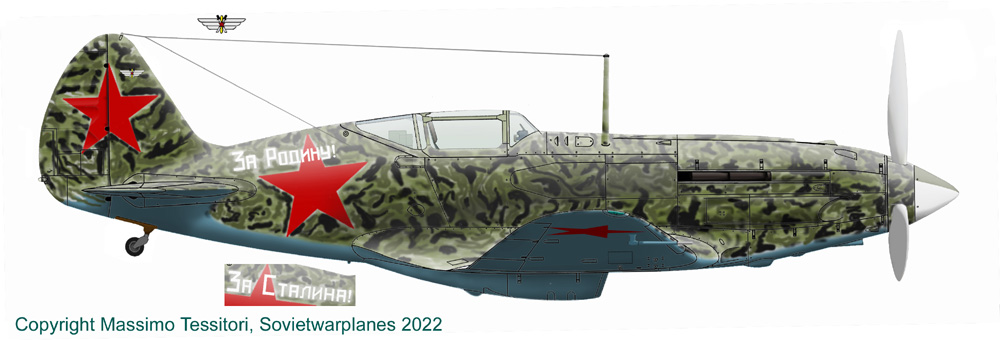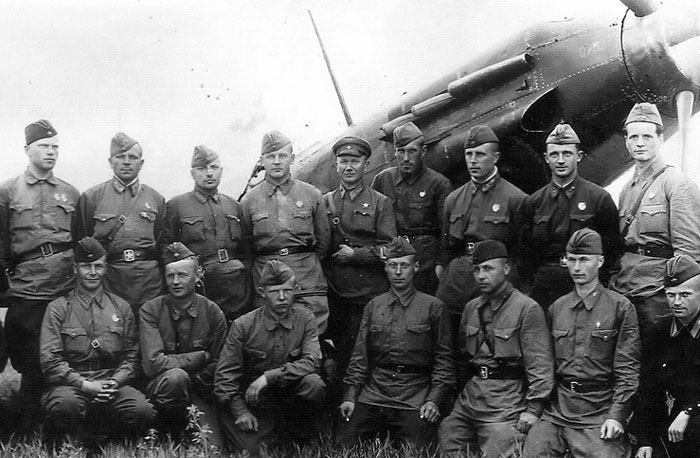
After having started the war equipped with I-153s, 148 IAP was re-equipped with MiG-3s on 13 September 1941. It belonged to the Bryansk Front in which it participated in the defense of Moscow.
In May 1942, at the time of the Battle of Kharkov, 148 IAP was "leased" to the south-western Front and incorporated into the "reserve aviation group n° 4 (RAG 4). The regiment had 9 Mig 3s, of which 2 were out of service; it was the only unit equipped with this type to take part to the battle of Kharkov; all other fighter units had other types as Yak-1, LaGG-3, I-153 and I-16.
Both 148 IAP and 99 BBAP, the bomber unit of Pe-2 that it had to escort, were based on Evstratovsky airfield. Unfortunately the escort work of 148 IAP wasn't very successful: the MiG-3 pilots flew high to optimize the performance of their fighters, leaving the lower hemisphere of the bombers unprotected, so the pilots of 99 BBAP preferred to rely on the protection of the clouds more than of the escort fighters.
On 19 May 1942, while escorting Pe-2s, the MiG-3s fought with the Bf-109 of II/Jg 52 reporting their only victory; no data on the losses of 148 IAP.
In June 1942, after the battle of Kharkov, the unit changed the MiG-3s for Yak-1s; remaining planes were transferred to 101 Division of PVO.
The interest of this unit is for some peculiarities of the painting of its MiG-3s, particularly during the battle of Kharkov. Unfortunately the images are very fragmentary, but give a self-consistant idea.
This image is thought to show a MiG-3 in late summer 1941. One particularity is visible: it seems that a sector of the front of the spinner is painted white, a very unusual thing in Soviet Air Force. The photo doesn't allow to see the proprtion of frontal angle painted white, it shows only that the division is equidistant from the closer blade roots.
The MiG-3 is of the late type, as expected for a unit equipped with new planes in September 1941.
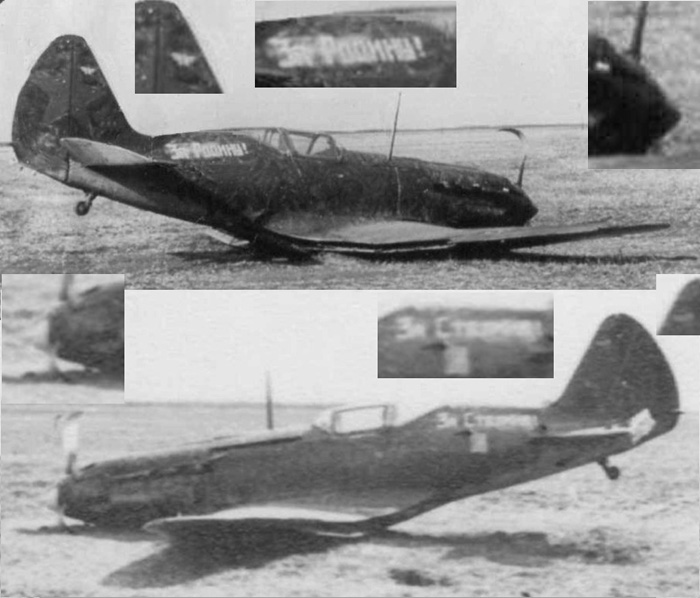
Two photos of the same plane after a forced landing, probably in spring 1942 during the battle of Kharkov. It is the only one of which we have complete photos from both sides.
The photos confirm that the front of the spinner was painted white on one sector while another sector seems of the usual dark green color. But what isthe angular extension of the sectors? The image below is compatible with the whole left half painted white (the thin dark line at the top is compatible with the shadow of the upper prop blade), while the image from the right seems to show a light area at the top, with the division located about at half way between the blade roots. This suggests that the white sector could be extended for 2/3 of the front, and the green area for 1/3.
Another most interesting characteristic is the couple of slogans on the rear fuselage:' Za Rodinu!' (For the Motherland!) on the right side, and 'Za Stalina!' (For Stalin!) on the left side. The square area under 'Za Stalina! is probably due to some souvenir hunter peeling off a part of the fabric skinning with a part of the fuselage star painted on; this suggests that the plane landed on German-controlled ground and was lost.
There is no any number visible on the tail or on the fuselage.
Another characteristic of interest is the emblem on both sides of the fin, a propeller with the wings that is the emblem of the VVS. It is unclear if it was present on all the planes, and how it could have appeared on a plane with a predominantly white livery.
Another charcteristic is the unusual and confused camouflage, not the standard green-black one from the factory. The comparison with other photos taken during the battle of Kharkov suggest that the dark colors, probably the usual green and black, were painted over a layer of white winter paint.
The MiG-3 is of late type, consistently with all available photos of planes of this unit. We can see that the tail wheel doors were removed, and the tail wheel was made fixed to prevent difficulties in its extraction. The bay was closed with a tissue cover.
Images from https://www.master194.com/forum/viewtopic.php?p=1561391#p1561391
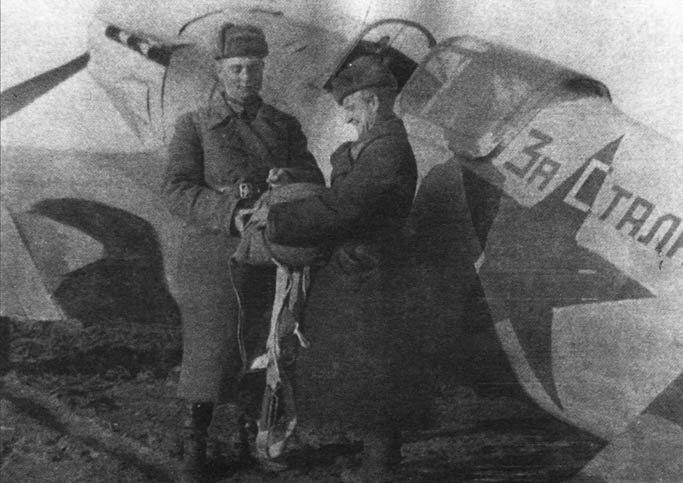
This image represents a MiG-3 of 148 IAP during the battle for
Kharkov in 1942; on the photo, Ivan I. Pavlov and parachute packer Yevgeniy
Kazakov check the parachute of 148 th. IAP. pilot maj. Yakov Titayev before
a sortie.
The aircraft is only partially visible on this image, but it shows interesting
characteristics.
While examining this photo, we have to take in account that the light
is nearly horizontal, and that some dark parts of the photo extend on
the background too, this allows to identify them as photo defects.
An interesting characteristic is the black blotch on the wingroot, that
seems painted with thinned paint; not to be confused with the shadows
of the men projected onto the fuselage. The less dark area on the central
plan looks not overpainted, but due to a scarcely successful attempt to
remove the white paint in some way.
Image from Mir Aviacia 2-2002
Below: a reconstruction of the look of this plane. Where not visible on the photo, the camouflage was guessed.
Note the the couple of slogans on the rear fuselage:' Za Rodinu!' (For the Motherland!) on the right side, and presumably 'Za Stalina!' (For Stalin!) on the left side. They were painted red on the white background, and white on the red background. As on other planes of the unit, the front of the spinner could be painted for 2/3 white and 1/3 green; the prop blades seem light, as if all the paint was lost; note the inert gas system on the left side of the cowling.
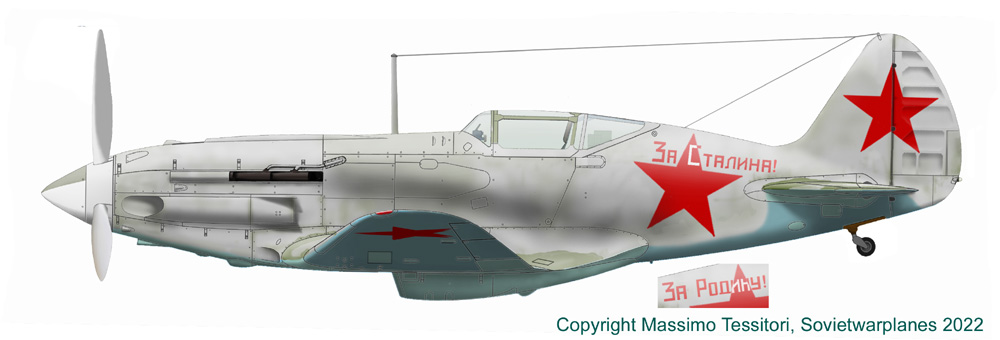
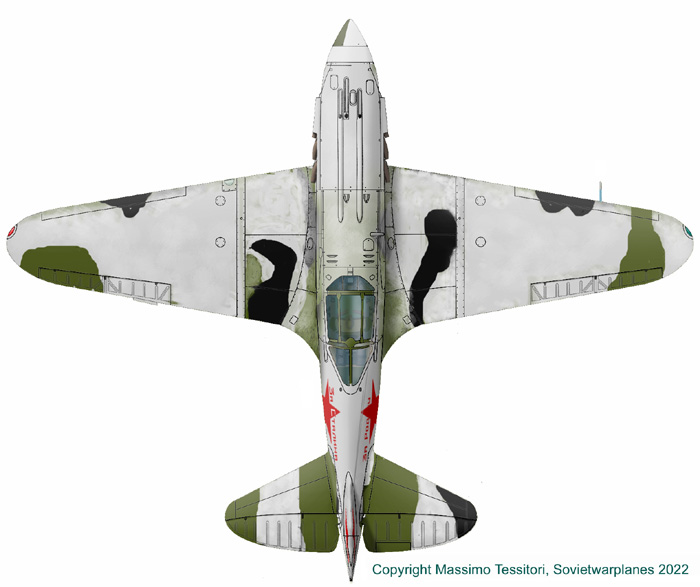
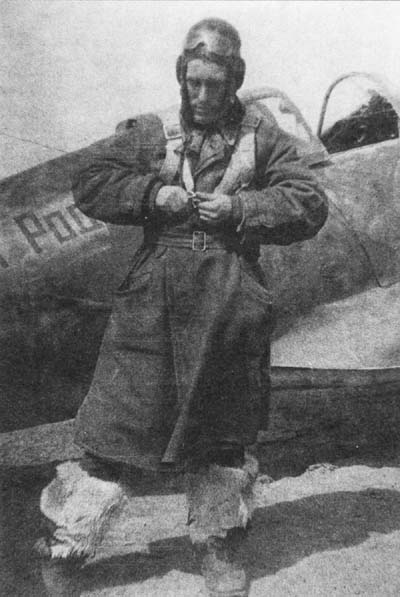
This image shows another MiG-3 of 148 IAP during the battle for
Kharkov in 1942; on the photo, 1st. Sqn Commander Capt. M. Nekrasov.
The aircraft is only partially visible on this image, but it shows an
unhedited camouflage obtained with a thin green repainting on a white
winter base; some black dots were added on it.
As other planes of the unit, it had a couple of slogans on the rear fuselage:' Za Rodinu!' (For the Motherland!) on the right side, and presumably 'Za Stalina!' (For Stalin!) on the left side. They were painted red on the white background, and white on the red background.
Note the the couple of slogans on the rear fuselage:' Za Rodinu!' (For the Motherland!) on the right side, and presumably 'Za Stalina!' (For Stalin!) on the left side. They were painted red on the white background, and white on the red background. As on other planes of the unit, the front of the spinner could be painted for 2/3 white and 1/3 green; the prop blades were presumably light, as if all the paint was lost; we can presume the presence of the inert gas system on the left side of the cowling.
Image from Mir Aviacia 2-2002
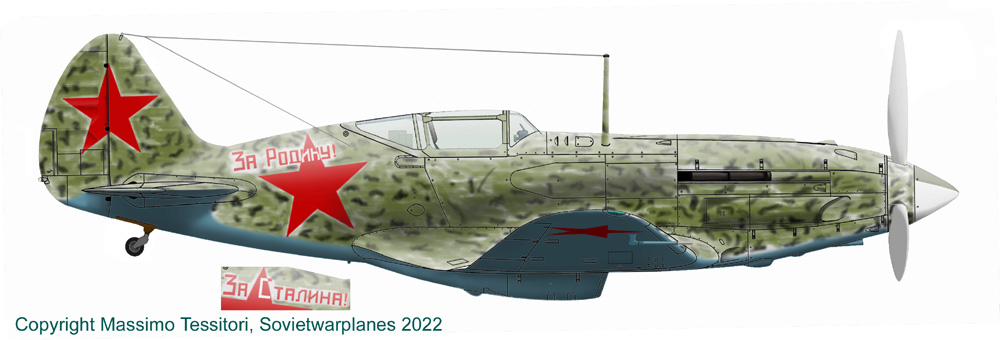
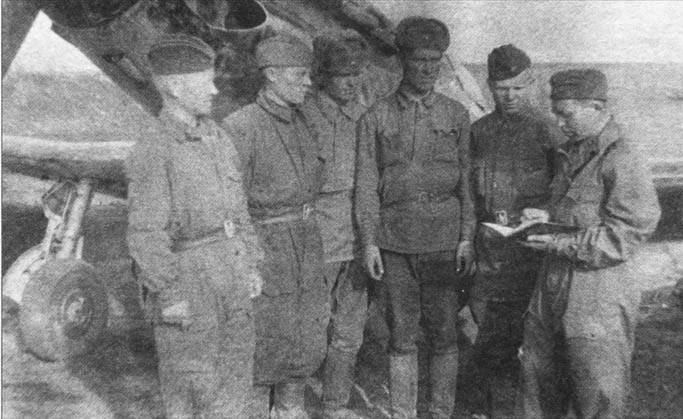
This image represents a MiG-3 of 148 IAP during the battle for
Kharkov in 1942; on the photo, chief technician Lt. Bazdyrev checks the
work plans of his crew of mechanics.
The aircraft is only partially visible on this image, but it shows an
unhedited camouflage, apparently made with small green and perhaps black
dots over the white winter background.
Although not visible, we suppose that the regimental marks were as on other known planes of the unit, with the slogans' Za Stalina!' on the left side and 'Za Rodinu! on the right one, white on the red background and red on the white background, and the front of the spinner was half white and half green; difficult to say about the small VVS emblem seen on another plane of the unit; being predominantly white, this emblem looks unlikely on a predominantly white background. As on other planes of the unit, the front of the spinner could be painted for 2/3 white and 1/3 green; the prop blades were presumably light, as if all the paint was lost; we can see the inert gas system on the left side of the cowling.
Image from Mir Aviacia 2-2002
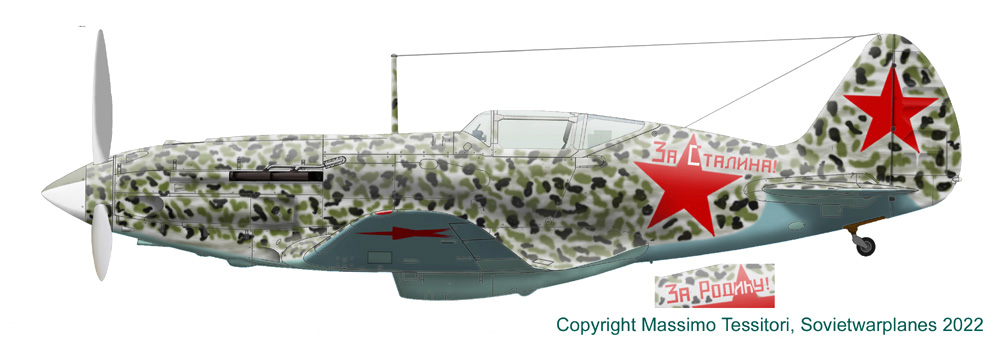
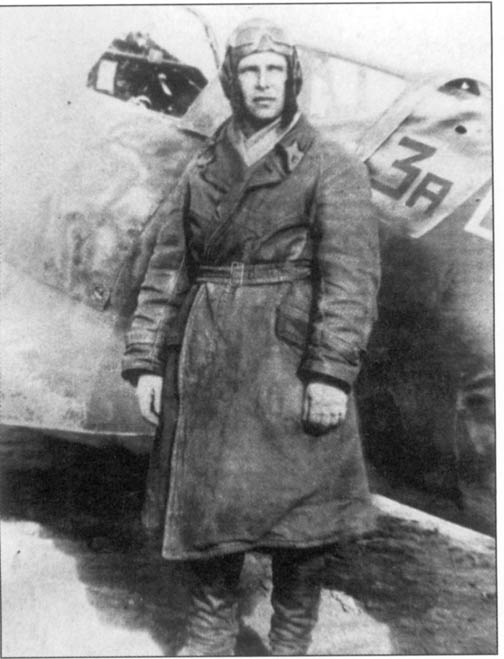
The plane of pilot and voenkom (military commissar) Doroshin resembles the other known planes of the unit; on this image, the camouflage seems made with thin green curved lines on a white background, while black paint seems used only for few small dots.
It is very likely that the winter white layer was progressively covered with black and green dots in more steps, according to the advancing of the spring and the melting of the snow on the ground.

Let's return on the downed plane of the photos above. An accurate comparison made by Anton Petrov has shown that some small dots are common to the plane of capt. Nekrasov; this matching suggests that it is the same plane, after the addition of some more green and black to darken the camouflage because of the progression of the spring. The 'winter' white-red slogan has been repainted in white only because it had a better contrast to the darkened background.
It is not clear if the VVS emblem on both sides of the fin was added only on the darkened camouflage or was present in some form even before; it is difficult to imagine how this predominantly white emblem could have appeared on a snow white livery. In my reconstruction, the emblem is represented as white simplified wings with crossed swords, a yellow propeller and a red star. Other variations of the VVS emblem did exist, but this looks the most compatible.

